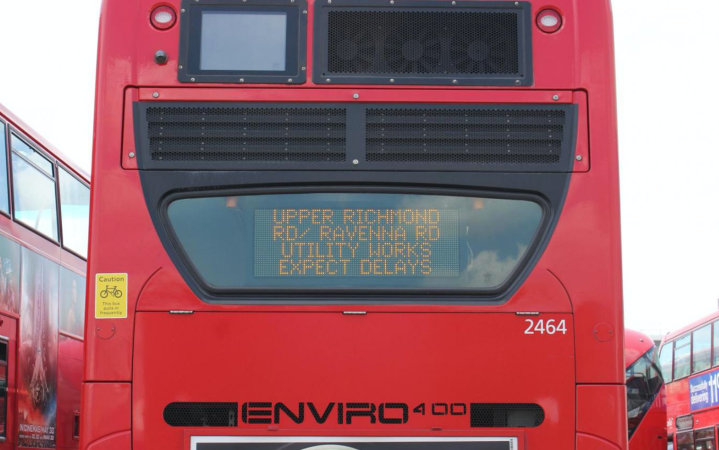
The displays, which come in the form of electronic boards outfitted with GPS technology, are powered by data from TfL’s 24-hour traffic control center. While the only buses that currently boast this feature run on route 344 between Clapham Junction and Liverpool Street, the hope is that the tech will soon expand across the city. There are already plans for more buses to make their debut in the fall.
“This innovative use of one of the Capital’s most iconic features – the London bus – will help all road users,” said Garrett Emmerson, TfL’s chief operating officer for surface transport. “We’re focused on keeping London moving and on giving drivers real-time information through a range of channels to help them avoid congested roads and reduce wasted time and needless pollution from idling cars.”
Inspired by an earlier trial of live traffic information displayed on taxi toppers, TfL noted that they’ve already “proved the concept of real-time traffic information delivered in this form.”
Craig Holloway, chief executive of Equitech IT Solutions, who is providing the displays for the buses, said, “We are delighted to be partnering with TfL to trial this new technology. We know how beneficial having real-time traffic information can be for road users, and the technology we have developed will hopefully make life for Londoners easier by having up-to-date information provided to them when traveling on the capital’s roads.”
Editors' Recommendations
- Unreal Engine just demoed ‘film-quality’ visuals running in real time
- The Volkswagen Bus is back, and this time it’s electric
- Listen to the soothing sound coming to London’s electric buses
- Waze offers cities a trove of data to help fight traffic


